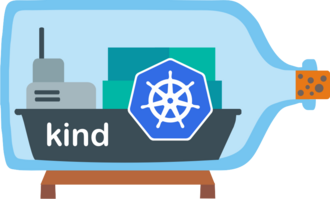
Advanced Guide to Containerization and Kubernetes
Introduction: Beyond the Basics
Containers have transformed the way we package and deploy applications. Unlike virtual machines, containers share the host kernel while isolating processes. This makes them lightweight, portable, and fast to start. But running containers at scale is not as simple as docker run. In this article, we'll explore advanced containerization topics with practical examples, focusing on Kubernetes as the de facto orchestrator.
Building Secure and Efficient Images
A container image is the foundation of your workload. Poorly designed images lead to slow deployments, security risks, and wasted storage.
Example: Multi-stage Dockerfile
# Stage 1: Builder
FROM golang:1.20 AS builder
WORKDIR /src
COPY . .
RUN go build -o app .
# Stage 2: Runtime
FROM gcr.io/distroless/base
COPY --from=builder /src/app /app
CMD ["/app"]Explanation:
- Stage 1 uses the full Go toolchain to compile the binary.
- Stage 2 uses a minimal
distrolessbase image with no shell or package manager, reducing attack surface and image size. - Result: small, secure image optimized for production.
Security Scanning
Before pushing, scan the image:
trivy image myregistry/myapp:1.0.0This reports CVEs and vulnerable dependencies.
Kubernetes Runtime: Docker vs containerd
Kubernetes originally supported Docker directly via dockershim. As of v1.24, dockershim was removed. Kubernetes now relies on CRI-compliant runtimes:
- containerd: default in many distributions.
- CRI-O: lightweight and Kubernetes-focused.
What this means: You can still build images with Docker, but Kubernetes runs them using containerd or CRI-O under the hood. Tooling that depends on the Docker socket may break and should be updated.
State and Storage
Containers are ephemeral, but many applications need persistence. Kubernetes handles this through Persistent Volumes (PVs) and Persistent Volume Claims (PVCs).
Example: PVC and StatefulSet
apiVersion: v1
kind: PersistentVolumeClaim
metadata:
name: db-pvc
spec:
accessModes:
- ReadWriteOnce
resources:
requests:
storage: 10Gi
---
apiVersion: apps/v1
kind: StatefulSet
metadata:
name: postgres
spec:
serviceName: "postgres"
replicas: 1
selector:
matchLabels:
app: postgres
template:
metadata:
labels:
app: postgres
spec:
containers:
- name: postgres
image: postgres:15
volumeMounts:
- name: data
mountPath: /var/lib/postgresql/data
volumeClaimTemplates:
- metadata:
name: data
spec:
accessModes: ["ReadWriteOnce"]
resources:
requests:
storage: 10GiExplanation:
- The PVC requests 10Gi of storage.
- The StatefulSet template provisions persistent storage per replica.
- If the pod restarts, data is retained.
Networking Deep Dive
Kubernetes networking is more than just exposing a Service. You often need fine-grained traffic control and security.
Example: Ingress with NGINX
apiVersion: networking.k8s.io/v1
kind: Ingress
metadata:
name: myapp-ingress
annotations:
nginx.ingress.kubernetes.io/rewrite-target: /
spec:
rules:
- host: myapp.example.com
http:
paths:
- path: /
pathType: Prefix
backend:
service:
name: myapp-service
port:
number: 80Explanation: This routes traffic from myapp.example.com to the internal service.
Example: NetworkPolicy
apiVersion: networking.k8s.io/v1
kind: NetworkPolicy
metadata:
name: allow-frontend-to-backend
spec:
podSelector:
matchLabels:
role: backend
ingress:
- from:
- podSelector:
matchLabels:
role: frontendThis allows only frontend pods to connect to backend pods.
Scaling and Deployment Strategies
Kubernetes supports several deployment strategies beyond "scale replicas up or down."
Example: Canary Deployment with Istio
apiVersion: networking.istio.io/v1alpha3
kind: VirtualService
metadata:
name: myapp
spec:
hosts:
- myapp.example.com
http:
- route:
- destination:
host: myapp
subset: stable
weight: 90
- destination:
host: myapp
subset: canary
weight: 10Explanation:
- Traffic is split: 90% stable, 10% canary.
- Metrics determine if the canary is healthy before promoting.
Security in Action
Security should be applied at multiple layers: cluster, pod, and runtime.
Example: Restricted Pod
apiVersion: v1
kind: Pod
metadata:
name: restricted
spec:
containers:
- name: app
image: myapp:1.0.0
securityContext:
runAsNonRoot: true
allowPrivilegeEscalation: false
capabilities:
drop: ["ALL"]Explanation:
- Runs as non-root.
- Drops all Linux capabilities.
- Prevents privilege escalation.
Example: RBAC Role
apiVersion: rbac.authorization.k8s.io/v1
kind: Role
metadata:
namespace: dev
name: pod-reader
rules:
- apiGroups: [""]
resources: ["pods"]
verbs: ["get", "list"]This restricts access to only reading pods in the dev namespace.
Observability and Operations
Without observability, debugging distributed systems is guesswork.
Example: Prometheus Scrape Config
scrape_configs:
- job_name: 'kubernetes-pods'
kubernetes_sd_configs:
- role: pod
relabel_configs:
- source_labels: [__meta_kubernetes_pod_annotation_prometheus_io_scrape]
action: keep
regex: truePods annotated with prometheus.io/scrape=true are automatically monitored.
Distributed Tracing
Use OpenTelemetry to trace requests across microservices. This helps identify latency bottlenecks.
CI/CD and GitOps
Modern workflows deploy continuously and declaratively.
Example: ArgoCD Application
apiVersion: argoproj.io/v1alpha1
kind: Application
metadata:
name: myapp
spec:
destination:
namespace: default
server: https://kubernetes.default.svc
source:
repoURL: 'https://github.com/myorg/myapp-configs'
targetRevision: main
path: overlays/prod
syncPolicy:
automated:
prune: true
selfHeal: trueExplanation:
- Git is the source of truth.
- ArgoCD reconciles desired state automatically.
- Drift is corrected by self-heal.
Conclusion: Best Practices and Pitfalls
- Keep images small and secure.
- Use resource requests/limits to avoid noisy neighbors.
- Encrypt secrets and manage them properly.
- Apply network policies to enforce zero trust.
- Invest in observability early.
- Avoid running stateful workloads without persistent volumes.
- Don't ignore upgrades--Kubernetes evolves quickly.
By following these practices, you can run resilient, secure, and scalable workloads in production.